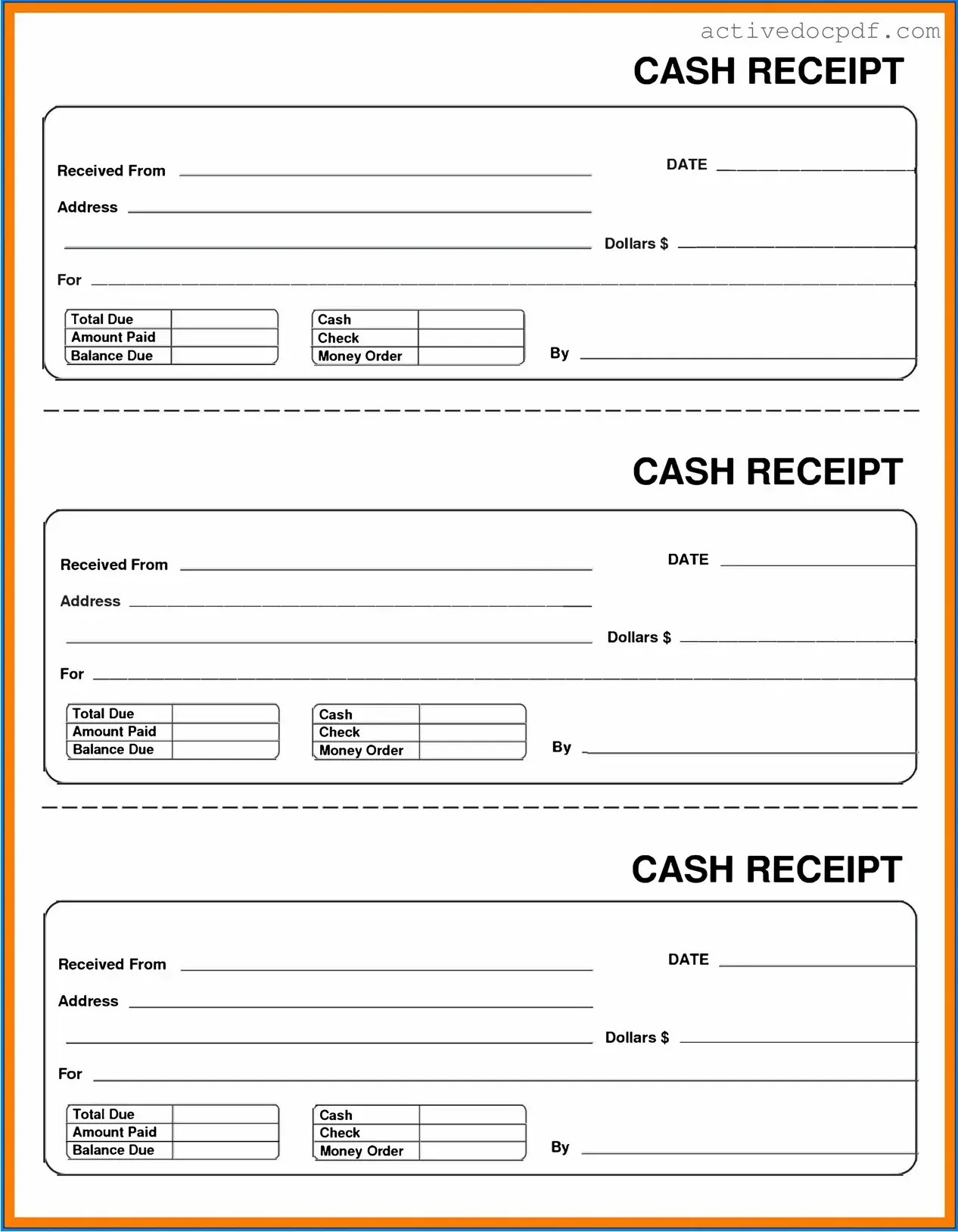A Cash Receipt form is a document used to record the receipt of cash payments. It serves as proof that a payment has been made and is essential for both accounting and record-keeping purposes. This form helps businesses track incoming cash and ensures accurate financial reporting.
You should use a Cash Receipt form whenever you receive cash payments from customers or clients. This includes payments for goods, services, deposits, or any other transactions where cash is exchanged. It’s important to document these transactions to maintain accurate financial records.
A typical Cash Receipt form includes the following information:
-
Date of the transaction
-
Name of the payer
-
Amount received
-
Method of payment (cash, check, etc.)
-
Description of the transaction
-
Signature of the person receiving the payment
Providing complete information ensures clarity and helps avoid discrepancies in the future.
To fill out a Cash Receipt form, start by entering the date of the transaction. Next, write the name of the payer and the amount received. Indicate the payment method and provide a brief description of the transaction. Finally, sign the form to confirm the receipt of payment. Always keep a copy for your records.
Yes, a Cash Receipt form can also be used for electronic payments, such as credit card transactions or online payments. In this case, you would indicate the payment method as electronic and include any relevant transaction details to ensure proper documentation.
If you make a mistake on a Cash Receipt form, it’s best to cross out the error neatly and write the correct information next to it. Initial the change to indicate it was corrected. If the mistake is significant, consider creating a new form to maintain clarity and accuracy.
It is recommended to keep Cash Receipt forms for at least three to seven years, depending on your business’s record-keeping policy and any applicable tax regulations. Retaining these forms helps in case of audits or financial reviews.
No, a Cash Receipt form and an invoice serve different purposes. An invoice is a request for payment sent to a customer before payment is received, while a Cash Receipt form confirms that payment has been made. Both documents are important in the financial process but are used at different stages.
Absolutely! Many businesses choose to customize their Cash Receipt forms to include their logo, specific fields, or additional information relevant to their operations. Customization can enhance professionalism and ensure that all necessary details are captured.
Cash Receipt forms can be obtained from various sources. You can create one using a word processing or spreadsheet application, download templates from online resources, or purchase pre-printed forms from office supply stores. Ensure that the form meets your business needs and includes all required information.
